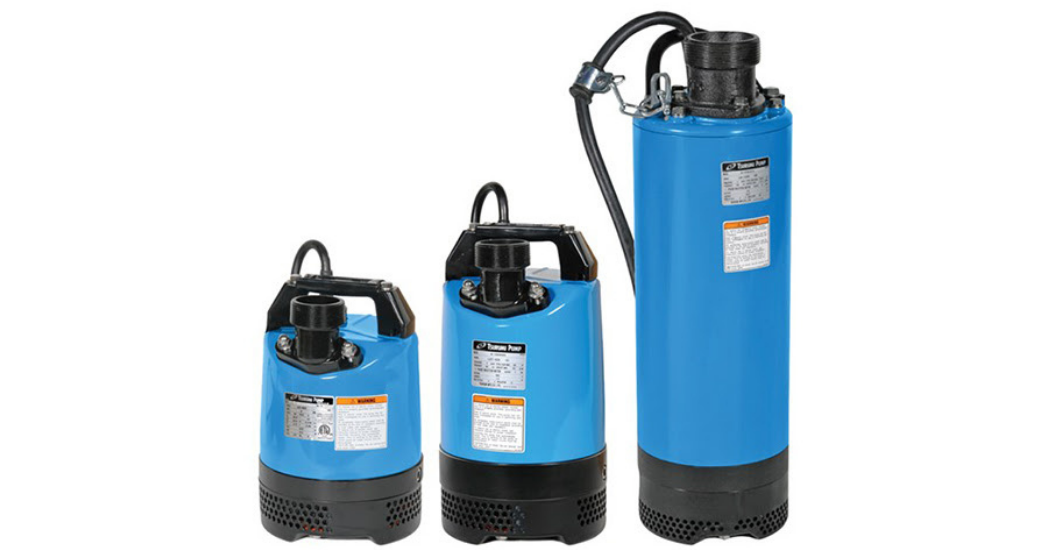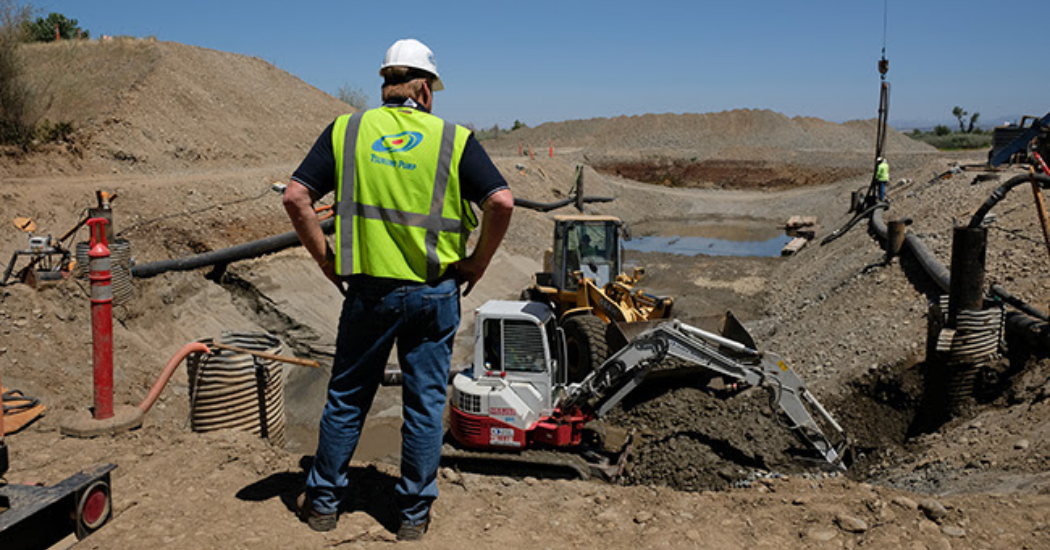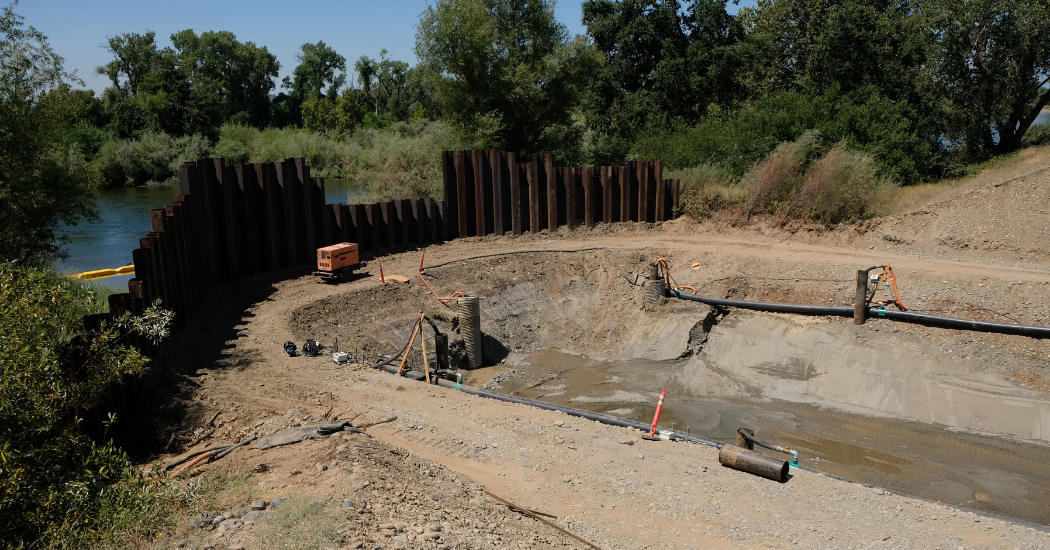Planning and choosing the right pumps are crucial for a well-executed dewatering operation. Tsurumi Pump’s Western Regional Sales Manager Jeff Davis discusses how to maximize efficiency and avoid unexpected costs.
What is temporary well dewatering and what are some examples?
Jeff Davis: Temporary well dewatering is a technique used for temporarily lowering the ground water table level in a designated area in order to allow work to be done at depths or site elevations which would ordinarily be submerged. Examples of types of work which may require temporary wells are underground mining, sewer and water pipeline installation, tie-ins to existing sewer and water pipelines, new building footings or repairs to existing foundations, and new bridge support piling installations or maintenance.
What are some of the aspects to consider when planning a well dewatering operation?
JD: The procedure of temporary well dewatering can be divided into three stages: the information collection stage, the planning stage, and the execution stage. During the information collection stage, we need first to measure the current level of the groundwater table and the type of soil (sand, gravel, rock, or clay layers) in the area of the job site. These can be accomplished by test drilling for core samples in the work site area and gathering historical information on soil characteristics or even previous dewatering operations.
Once the information is gathered, we step into the planning stage, where we need to determine the desired water level for the work to be done and the actions we need to take for achieving the goal. How many wells do we need? What spacing of the wells do we require? What size slots are required in the well casings? How much water is going to be moved, and where will the water be discharged? These are the questions that we need to answer before we dive into the execution stage, when we drill or jet the wells, and install the well casing or pipe into the ground to the depth required and below. Power availability is another crucial aspect to consider, and may involve requesting a line drop from the local power company or arranging for generators.
After the well casings are fully installed and fixed in place, we will lower the pumps into the wells to or near the bottom of the well. Electric submersible pumps are the type of pump most commonly used for well dewatering. With the pumps properly installed in the wells, we can maintain the desired water level throughout the duration of the job. When the job is completed the wells and pumps are removed, the groundwater level will return to normal.

The LB Series electric submersible dewatering pumps.
How do you go about choosing the correct pumps for each operation?
JD: When choosing the pump, it is critical to select a pump that is best suited to the task at hand. The pump’s horsepower and impeller type are determined by the required flow rate of the water and the total dynamic head on the discharge. It is also important to select the pump with the right materials of construction to cater to different situations. For instance, when dewatering mining and construction sites, it is necessary to use a pump made of durable materials such as high chrome cast, cast iron or heavy-duty cast aluminum. When operating in water with corrosive chemical content, a corrosion-resistant pump is required. Sometimes the pump can overheat due to running dry for extended periods or experiencing a power supply voltage drop. In this case, thermal motor protection is a must for the pump.
The well casing size is another important factor when selecting the right pump. Typically, the inside diameter of dewatering well casing is 8”, 12”, or 16” in construction. These are common sizes of PVC and steel pipes available from typical manufacturers. It is crucial to select the right pump size to fit inside the well casings with enough clearance to maneuver during installation and removal. Slimline designed pumps are commonly used for these operations. However, depending on the inside diameter of the well casings, different designs can be utilized.
Individual pump control panels are also standard equipment for the operations. The pump controls have automatic features that can sense the water level and turn the pump on and off as necessary to maintain water levels while conserving energy and allowing the pump to operate only when needed. Depending on the operations, it is essential to decide if an auto-control panel is required.

At the project in northern California, engineers placed the Tsurumi pumps into narrow well casings on both sides of a new waterway, allowing workers to pour concrete and build a canal.
What are some of the main pitfalls for a well dewatering operation?
JD: Electric submersible pumps need constant steady power with the proper voltage and amperage capability. It is important to make sure there is a reliable power source, whether a line drop from the power company or gas/diesel-powered generator(s). An improper power supply can damage the pump motors and cause failure.
Abrasive particles passing through the well slots in large quantities may cause pumps to wear out prematurely. The impellers and other wear parts, as well as the outer casings and motor housings, can wear thin and cause complete and catastrophic failure. This is one reason that proper well slot sizing is critical. It’s also important to perform routine maintenance to help mitigate issues that can arise in these harsh applications.
Allowing the pumps to run dry for extended periods can damage the pump physically. The electric motors use the water passing over the outside of the motor housing to dissipate heat and may also overheat if no water is present. This is one of the reasons proper level control panels are critical in temporary well dewatering.
If power cables become damaged, water may get into the pump and ultimately into the motor compartment, which will cause the electric motor to short out and possibly burn up. This is a common issue when lowering and handling the submersible pumps on a construction or mine site. Adequate strain relief on the power cable and a separate lifting rope or cable installed on the pump will reduce the chances of damage.
Tsurumi’s network of expert dealers can guide customers through all these considerations to ensure they precisely receive the right pumps. The Tsurumi team is also always ready to help. Please contact Tsurumi using their website or call them at 888-TSURUMI (878-7864).
For more information, visit Tsurumi’s product pages for the LB Series, LBT Series, and LH Series.




